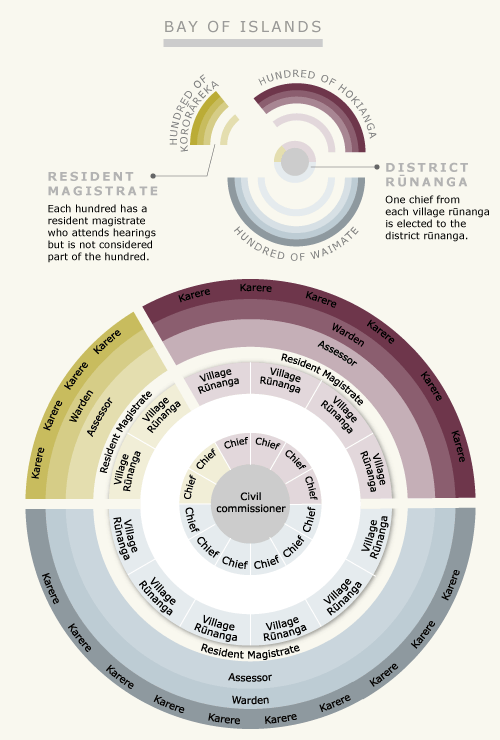
The rūnanga system, devised by Governor George Grey, was an attempt to give Māori a form of local government comparable to the provinces. Paid resident magistrates and assessors (Māori magistrates) would be overseen by European commissioners. The model shown here was based on a report on the structure proposed for the Bay of Islands – it varied elsewhere, although everywhere it fell victim to the renewal of conflict between the Crown and Māori in 1863.
Using this item
Te Ara - The Encyclopedia of New Zealand
This item has been provided for private study purposes (such as school projects, family and local history research) and any published reproduction (print or electronic) may infringe copyright law. It is the responsibility of the user of any material to obtain clearance from the copyright holder.
Source: Lindsay Cox, Kotahitanga: The search for Maori political unity. Auckland: Oxford University Press, 1993









Add new comment